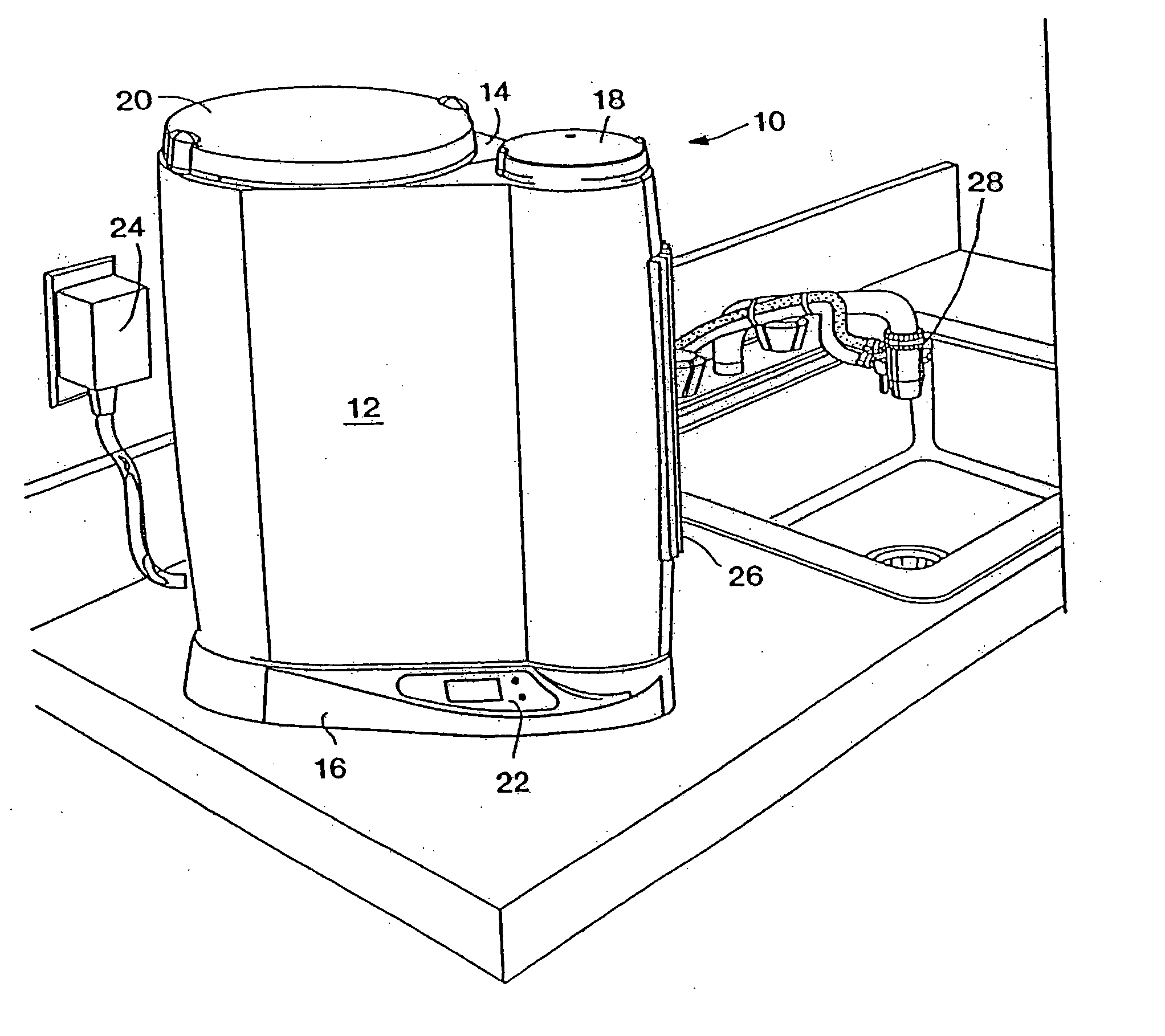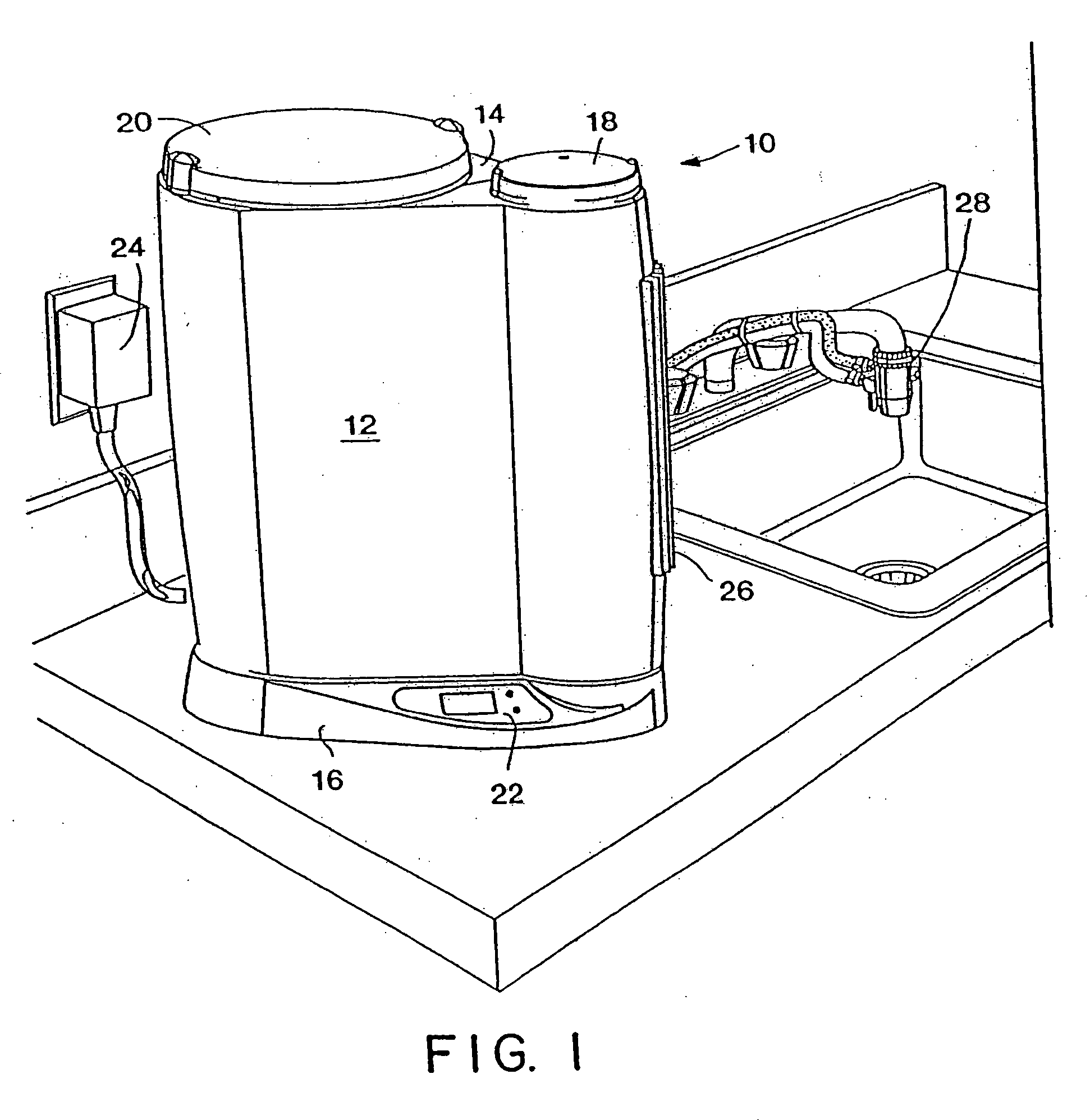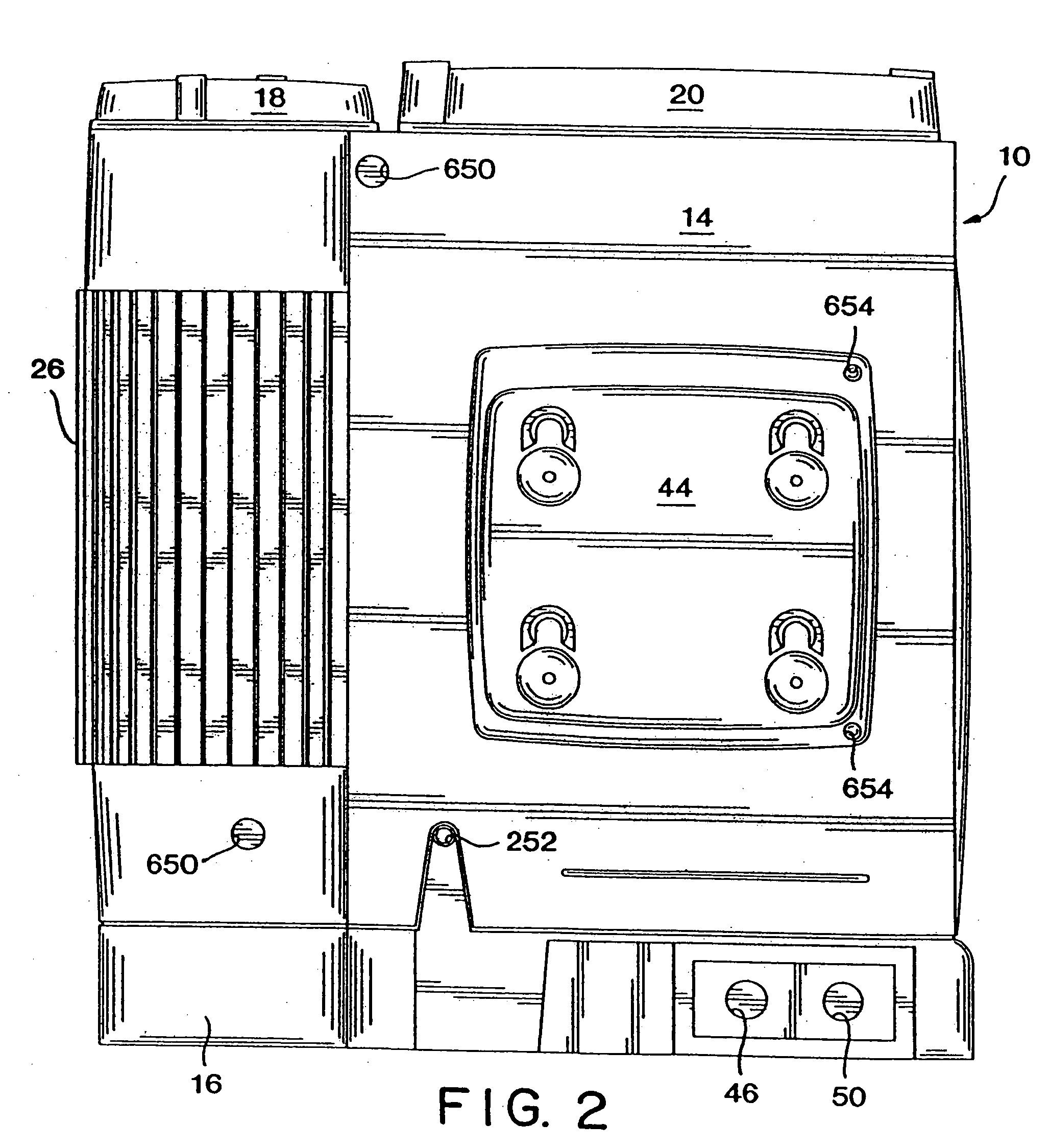Point-of-use water treatment system
a technology of point-of-use water treatment and water treatment system, which is applied in the direction of multi-stage water/sewage treatment, other chemical processes, separation processes, etc., can solve the problems of heat build-up inside and outside the filter housing of the wts unit, increase the temperature of water stored within the wts unit, and difficult to remove or install the filter closure from or on the wts unit filter housing, etc., to achieve easy and quick installation and removal. ,
- Summary
- Abstract
- Description
- Claims
- Application Information
AI Technical Summary
Benefits of technology
Problems solved by technology
Method used
Image
Examples
Embodiment Construction
[0048]FIGS. 1 and 2 show a WTS (water treatment system) unit 10 made in accordance with the present invention. WTS unit 10 uses carbon block filtration to filter particles and remove certain chemical contaminants from water. A UV light system is employed to destroy microorganisms. A monitor is used to report on the status of the filtration and the UV light systems.
[0049] WTS unit 10 includes a front outer housing 12, a rear outer housing 14, and a flow monitor assembly 16 which also serves as the base for the WTS unit 10. Located atop front and rear outer housings 12 and 14 are decorative bulb and filter covers 18 and 20. A monitor 22 is mounted in flow monitor assembly 16 which will be further described below. A power supply 24, in the form of a transformer, provides electrical power to WTS unit 10. A finned aluminum support plate 26 extends through an opening in rear outer housing 14 and facilitates the dissipation of heat from within WTS unit 10. A faucet diverter valve assembly...
PUM
| Property | Measurement | Unit |
|---|---|---|
| angle | aaaaa | aaaaa |
| angles | aaaaa | aaaaa |
| angles | aaaaa | aaaaa |
Abstract
Description
Claims
Application Information
 Login to View More
Login to View More - R&D
- Intellectual Property
- Life Sciences
- Materials
- Tech Scout
- Unparalleled Data Quality
- Higher Quality Content
- 60% Fewer Hallucinations
Browse by: Latest US Patents, China's latest patents, Technical Efficacy Thesaurus, Application Domain, Technology Topic, Popular Technical Reports.
© 2025 PatSnap. All rights reserved.Legal|Privacy policy|Modern Slavery Act Transparency Statement|Sitemap|About US| Contact US: help@patsnap.com



